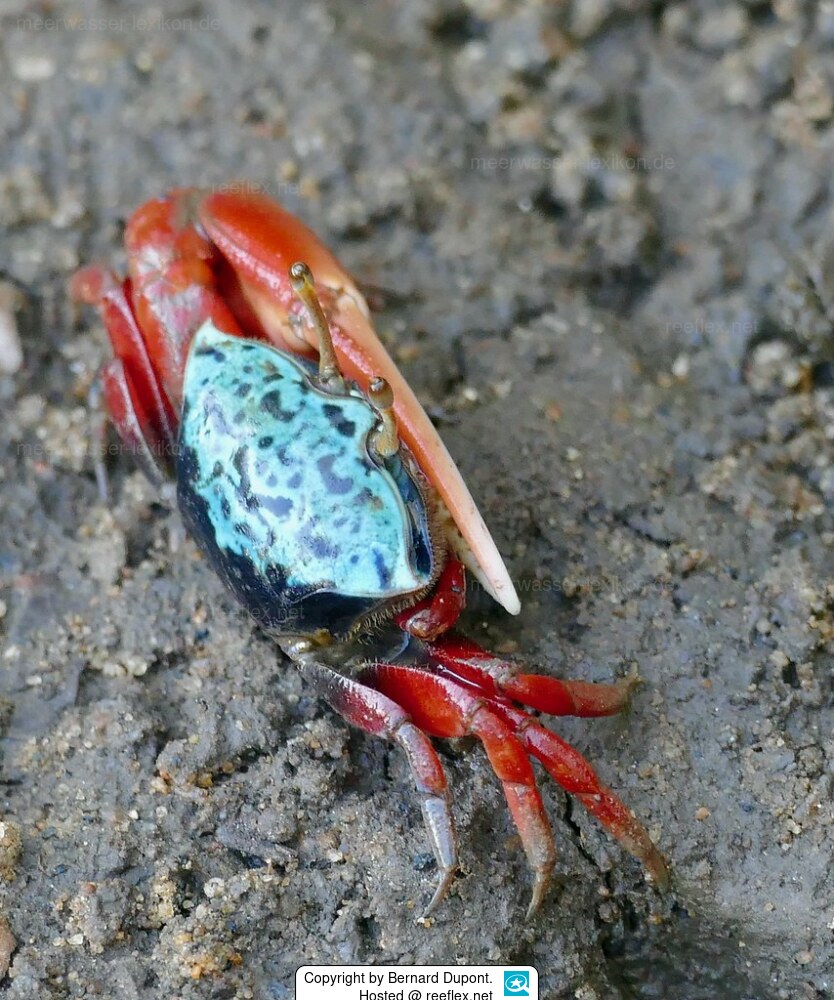Info
Paraleptuca chlorophthalmus (H. Milne Edwards, 1837)
The most of fiddlers occur in mangroves or along the shore,estuarine, burrowing in mud.
Paraleptuca chlorophthalmus dig burrows in the muddy or sandy banks of salt marshes, which they use to protect themselves from predators, high tide and extreme temperatures. They feed by filtering detritus out of mud, and defend their burrows against other fiddler crabs. Paraleptuca chlorophthalmus is characterised by its red extremities, blue and black markings on its carapace and green eyes.
Paraleptuca chlorophthalmus was formerly a member of the genus Uca, but in 2016 it was placed in the genus Paraleptuca, a former subgenus of Uca
Synonymised names:
Gelasimus chlorophthalmus H. Milne Edwards, 1837 · unaccepted
Uca (Paraleptuca) chlorophthalmus (H. Milne Edwards, 1837) · unaccepted
Uca (Paraleptuca) chlorophthalmus chlorophthalmus (H. Milne Edwards, 1837) · unaccepted
Uca amazonensis Doflein, 1899 · unaccepted (junior synonym)
The most of fiddlers occur in mangroves or along the shore,estuarine, burrowing in mud.
Paraleptuca chlorophthalmus dig burrows in the muddy or sandy banks of salt marshes, which they use to protect themselves from predators, high tide and extreme temperatures. They feed by filtering detritus out of mud, and defend their burrows against other fiddler crabs. Paraleptuca chlorophthalmus is characterised by its red extremities, blue and black markings on its carapace and green eyes.
Paraleptuca chlorophthalmus was formerly a member of the genus Uca, but in 2016 it was placed in the genus Paraleptuca, a former subgenus of Uca
Synonymised names:
Gelasimus chlorophthalmus H. Milne Edwards, 1837 · unaccepted
Uca (Paraleptuca) chlorophthalmus (H. Milne Edwards, 1837) · unaccepted
Uca (Paraleptuca) chlorophthalmus chlorophthalmus (H. Milne Edwards, 1837) · unaccepted
Uca amazonensis Doflein, 1899 · unaccepted (junior synonym)







 Bernard Dupont, Frankreich
Bernard Dupont, Frankreich


